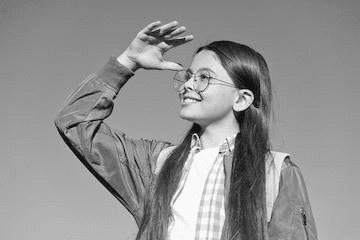Pediatric Eye Care: How Ophthalmologists Protect Children’s Vision

As parents, we all want the best for our children, especially their health. However, vision is one of the most important aspects of a child’s well-being. Good vision is crucial for a child’s development and learning, and any problems with their eyes can significantly impact their quality of life. That’s why pediatric eye care is so important. Ophthalmologists, or eye doctors, who specialize in this field, are trained to identify and treat eye conditions in children, from infants to adolescents. They use various techniques and tools to diagnose and manage eye disorders, from glasses to surgery.
In this article, we’ll explore the importance of pediatric eye care and how ophthalmologists work to protect children’s vision. Whether you’re a parent or a healthcare professional, this information can help you ensure the best possible outcomes for your child’s vision health.
Common Eye Problems in Children
Children are susceptible to a variety of eye problems. Some of the most common conditions are amblyopia (lazy eye), strabismus, and refractive errors. These conditions can cause problems with reading, learning, and social development.
Amblyopia is when one eye has poor vision, and the brain relies on the other to see. If left untreated, it can lead to permanent vision loss in the affected eye. Strabismus is a condition where one eye may turn inward, outward, upward, or downward. This can cause double vision, poor depth perception, and eye strain.
Refractive errors are common in children and can be corrected with glasses or contact lenses. Nearsightedness, or myopia, causes distant objects to appear blurry, while farsightedness, or hyperopia, causes near objects to appear blurry. Astigmatism is a condition where the cornea is shaped more like a football than a basketball, causing distorted or blurred vision.
The Role of Ophthalmologists in Pediatric Eye Care
Ophthalmologists play a critical role in the care of children’s eyes. They are trained to detect and treat eye conditions in children, from routine eye exams to complex surgeries. In addition, pediatric ophthalmologists have completed specialized training in diagnosing and treating eye disorders in children, including those with special needs.
Ophthalmologists use various tools and techniques to diagnose eye conditions in children. For example, they may use eye drops to dilate the pupils, allowing them to see inside the eye and check abnormalities. They may also use specialized equipment to measure vision and check refractive errors. In addition, ophthalmologists work closely with other healthcare providers to ensure comprehensive care for children with complex medical needs.
Importance of Early Detection and Treatment
Early detection and treatment of eye conditions in children is critical for good vision health. Many eye conditions can be treated more effectively when detected early before they cause permanent damage to the eyes. For example, amblyopia can often be corrected with glasses or contact lenses if detected early, while surgery may be required if the condition is more severe.
Routine eye exams are an essential part of pediatric eye care. The American Academy of Ophthalmology recommends that children have their first eye exam at six months, followed by exams at age 3, and again before starting school. Children with a family history of eye problems or other risk factors may need more frequent exams.
Eye Exams for Children
Eye exams for children are different from those for adults. Ophthalmologists use specialized techniques and equipment to examine the eyes of children, who may not be able to communicate what they see or read letters on a chart. In addition, pediatric ophthalmologists are trained to work with children and make them feel comfortable during the exam.
The ophthalmologist will check the child’s vision and eye alignment during a pediatric eye exam. They will also check for refractive errors and other eye conditions, such as cataracts or glaucoma. The exam may include eye drops to dilate the pupils and allow the ophthalmologist to see inside the eye.
Tips for Parents to Protect Their Child’s Vision
Parents can take steps to help protect their child’s vision health. One of the most important is ensuring their child has regular eye exams. In addition, parents can take steps to prevent eye injuries, such as making sure their child wears protective eyewear while playing sports or working with tools.
Good nutrition is also important for good vision health. For example, vitamin A-rich foods such as carrots, sweet potatoes, and spinach can help maintain healthy eyes. In addition, limiting screen time and encouraging outdoor play can help prevent eyestrain and myopia.
Treatment Options for Pediatric Eye Conditions
Treatment for pediatric eye conditions depends on the type and severity of the condition. For refractive errors, glasses or contact lenses may be prescribed to correct the child’s vision. Surgery may sometimes be needed to correct eye alignment or remove cataracts.
Vision therapy is another treatment option for children with certain eye conditions. It involves a series of exercises and activities designed to improve visual skills, such as eye tracking and focusing. Vision therapy can be effective for children with amblyopia, strabismus, and other eye conditions.
Myths and Misconceptions About Pediatric Eye Care
There are many myths and misconceptions about pediatric eye care. One common myth is that children will outgrow crossed eyes or other eye conditions. Many eye conditions require treatment to prevent permanent vision loss.
Another myth is that children do not need eye exams until they start school. Eye exams should begin in infancy to detect and treat eye conditions early.
Conclusion
Pediatric eye care is critical for the health and well-being of children. Ophthalmologists play a vital role in detecting and treating eye conditions in children, from routine exams to complex surgeries. Early detection and treatment of eye conditions are essential for good vision health and can prevent permanent vision loss. In addition, parents can take steps to protect their child’s vision health, such as ensuring regular eye exams and preventing eye injuries. Children can enjoy good vision, health, and a bright future with proper care and treatment.



